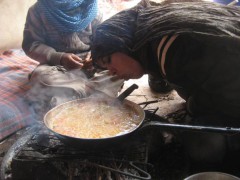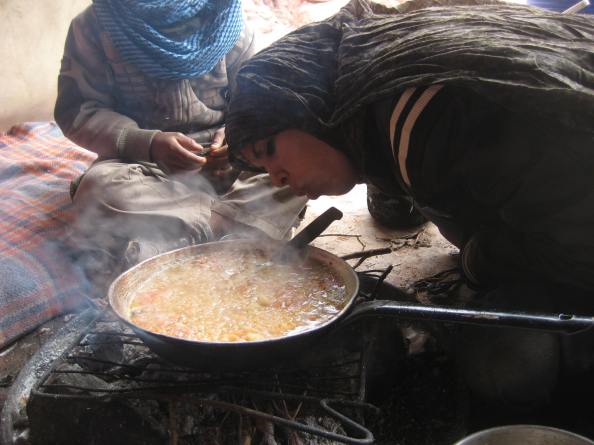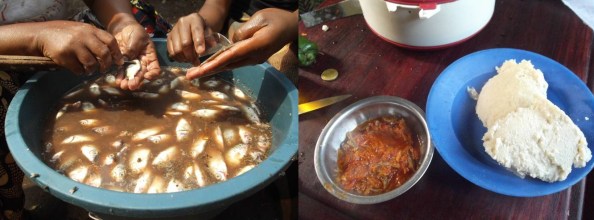How to really ‘Live Below the Line’

The annual ‘Live Below the Line’ campaign is on again this month. The campaign is described as ‘a way to better understand extreme poverty’ and involves participants eating for $2AUD a day for 5 days. The campaign began in Melbourne in 2010, supported by Australian NGO’s The Oaktree Foundation and Global Poverty Project. In only four years ‘LBL’ is an international movement and is supported by Oxfam, Save the Children and UNICEF amongst others. The campaign is raising money for a truly worthy cause, however for participants to get a more thorough experience of living like someone in extreme poverty they could also try this…
Turn off your electricity
Those who live in extreme poverty generally do not have access to electricity in their homes. This means when it is cold they are cold, there is no TV, radio or internet, no electric lighting, no electric stoves, kettles or toasters and no hot water service. Food is cooked with a gas stove or on a fire; lighting is supplied by the moon, mobile phone screen, candlelight or a gas lantern; and people wear jumpers and beanies instead of turning on the heater. So flick your switch to off.
Collect your water and take bucket showers
Turn off the mains taps to your property. Those in extreme poverty generally do not have access to running water in their homes. Find a large plastic bucket, collect your water from a local park or tap and then walk back to your house with it. Repeat this process many times to ensure you have enough water for cooking, washing clothes, bathing and drinking. If this sounds hard that’s because it is, but count yourself lucky you don’t have to worry about being raped while collecting your water. Back at home, you may or may not wish to boil your water for drinking, as this uses precious energy and resources, which are expensive. Finally, you must take a bucket shower, with cold water and hand wash all your clothes.
Do not drive
Forget about driving your car during ‘Live Below the Line week,’ those in extreme poverty can only ever dream of owning a car. You must either walk, take public transport, or if you are lucky enough to own one, ride a bike – and not that fancy sports bike with gears or the retro bicycle you bought from the vintage shop in Fitzroy – the old, rusty and hard to pedal one donated to ‘your community’ from China.
Medication
If you become unwell during your ‘poverty challenge’ because you are too cold, you have a poor diet, you cannot sleep properly or you are physically drained, well, you just have to suck it up. You’re poor, you cannot afford medication. Just count yourself lucky you won’t ever be struck down with malaria, TB, HIV or die from diarrhoea or a respiratory infection.
Work and school
If you really want to live like someone in extreme poverty, do not go to work and take your children out of school, particularly your daughters.
Food
Finally, your diet. To truly eat like someone in extreme poverty you will not be eating three filling and nutritious meals a day, nor will you have access to the internet or vegan recipe books to make your meals wholesome and tasty. No, your one or two meals per day must be repetitive and low in nutrients – you must eat what you can. Remember, you are extremely poor and the extremely poor do not generally dine on banana and flaxseed porridge for breakfast followed by spinach & mixed vegetable wholewheat pizza or roasted cauliflower and glenora chard with black lentil emulsion, pinenuts & sumac labna for dinner.
The dominant food product in your diet should of course be rice, but you cannot use your rice cooker to prepare this – a rice cooker for someone in extreme poverty is called a woman and they come in 5 varieties – mother, daughter, sister, wife and grandmother, and you have no electricity anyway, remember? So you better learn how to cook rice in a pot.
Breakfast can be bananas, perhaps a roti or chapati, maybe a boiled egg, or rice and fish, with tea or water to wash it down. Accompanying your rice in other meals, you can add red beans and at a stretch onions, tomatoes and spinach, and you can add some salt too. To add some variety to your diet of rice you can try exciting alternatives such as root crops or boiled maize meal. If you want to eat meat you can only afford fish or chicken, but any meat at all will be a luxury – and if you are vegetarian bad luck, you go hungry or return to rice, root crops or boiled maize meal.
This is merely a beginner’s guide to enhance your ‘Live Below the Line’ challenge. You may want to take things further by sleeping in a smaller bed or sharing a bed or being homeless, confining yourself to one room of your house for the five days, wearing one or two pairs of clothes for the 5 days, digging your very own drop toilet or even starving yourself and going begging on the streets.
Good Luck!
Tags: australasia, Development, economics, GLOBALISATION, inequality, poverty



